calsfoundation@cals.org
Hinderliter Grog Shop
Hinderliter Grog Shop is a two-story, hand-hewn log cabin in the heart of downtown Little Rock (Pulaski County). Considered the oldest remaining structure still standing in Little Rock, Hinderliter Grog Shop reflects architecture common in Arkansas during the 1820s and 1830s.
Chester Ashley sold Lots 7, 8, and 9 on Block 32 to Jesse Hinderliter for $128.10 sometime between 1820 and 1830. Hinderliter built the grog shop (with grog being defined as alcoholic liquor such as rum, sometimes cut with water and served warm) on the corner of Cumberland and Mulberry (now Third St.) sometime between 1828 and 1831. After his death in 1834, the property was sold at public auction to pay off Hinderliter’s debt to Ashley.
The building rests on a stone foundation. Constructed of large, hand-hewn oak logs, it was remodeled sometime around 1834. It is unknown which later owner added the red-heart, weatherboard cypress siding in the late 1830s. A porch was added to the rear at an unknown date. Upstairs interior wall boards were later removed to showcase the logs. An original, hand-carved, Federal-style mantel in the formal dining room shows that style was important, even on the frontier.
William F. Pope, in his reminiscences of early Little Rock, recalled Jesse Hinderliter and his residence: “Another old house which has withstood the march of improvements…stood and is still standing at the northwest corner of Cumberland and Mulberry [Third] streets…it was a two-story log building, but the addition of weatherboarding has given it the appearance of a frame structure. The old house was built and owned by one Jesse Hinderliter, a German.”
Jesse Hinderliter came from St. Louis, Missouri, with his wife, Sophia. After constructing the two-story log building, Hinderliter operated a grog shop and boarding room. Hinderliter and his wife lived in the building. The tax records for 1833 and 1835 list Hinderliter owning a few head of livestock. As to the occupation of Hinderliter, an 1833 account from the Arkansas Gazette recalls a “fatal recontre” that took place “at a grog-shop kept by Jesse Hinderliter.” Two enslaved individuals owned by Hinderliter, names unknown, also lived in the building.
By the 1880s, the Hinderliter Grog Shop shifted into tenements with a restaurant inside. Part of the building was also used for a laundry business. The structure was listed in the Historic American Buildings Survey in 1934. The survey noted that there were no logs in the central portion of the building, which indicates that the structure was not constructed all at once. Early photographs of the building also support this theory.
There has been some controversy over the years surrounding the question of whether the Arkansas territorial legislature met in the building during the 1830s, including having its last meeting there. William Pope, for instance, stated in his reminiscences in Early Days of Arkansas (1895) that “the last Territorial Legislature met October 5, 1835 and held its sittings in the old Henderliter [sic] house on the northwest corner of Cumberland and Mulberry streets. This old log house is still standing and was at the time the property of Thomas Thorn, one of the contractors of the new State House, that was to be.” However, this claim has since been disproven by historians. When Louise Loughborough and Max Mayer began the restoration to the historic buildings on Block 32 (now part of Historic Arkansas Museum—HAM), the Hinderliter Grog Shop became the star of the project under the false assumption that the last territorial legislative meeting took place there. But in 1941, and encouraged by Loughborough’s original branding campaign, the Arkansas Territorial Restoration (which later became HAM) boasted that with the preservation of the Hinderliter Grog Shop as the territorial capitol, Little Rock would be “A Town of Three Capitols,” making the city a special tourist attraction.
Hinderliter Grog Shop is part of the Arkansas Territorial Restoration District, which was listed on the National Register of Historic Places on May 31, 2019. It is the only individually listed property in the district.
For additional information:
“Arkansas Territorial Restoration Historic District.” National Register of Historic Places registration form. On file at Arkansas Historic Preservation Program, Little Rock, Arkansas. Online at http://www.arkansaspreservation.com/National-Register-Listings/PDF/ATRHD.nr.pdf (accessed March 17, 2020).
Bennett, Swannee. “An Interpretive Narrative and Furnishings Plan for the Arkansas Territorial Restoration Historic Structures.” Historic Arkansas Museum Archive, Little Rock, Arkansas.
Brownlee, Robert. An American Odyssey: The Autobiography of a 19th-Century Scotsman, Robert Brownlee, at the Request of His Children. Napa County, California, October 1892. Edited by Patricia A. Etter. Fayetteville: University of Arkansas Press, 1986.
Historic Arkansas Museum. http://www.historicarkansas.org/ (accessed June 25, 2021).
Pope, William F. Early Days in Arkansas. Little Rock, 1895.
Ross, Margaret. “The Hinderliter House: Its Place in Arkansas History.” Arkansas Historical Quarterly 30 (Autumn, 1971): 181–192.
Worthen, William B. “Louise Loughborough and Her Campaign for ‘Courage and Fineness.’” Pulaski County Historical Review 40 (Summer 1992): 26–33.
———. “Restoring the Restoration.” History News 39 (November 1984): 6–11.
Victoria Chandler
Historic Arkansas Museum
 Historic Preservation
Historic Preservation Louisiana Purchase through Early Statehood, 1803 through 1860
Louisiana Purchase through Early Statehood, 1803 through 1860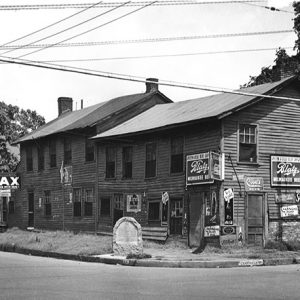 Hinderliter Grog Shop
Hinderliter Grog Shop  Hinderliter Grog Shop
Hinderliter Grog Shop 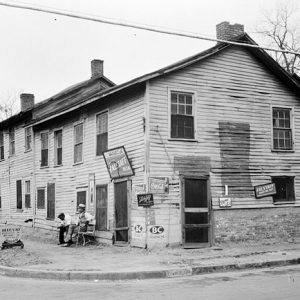 Hinderliter Grog Shop
Hinderliter Grog Shop  Hinderliter Grog Shop
Hinderliter Grog Shop 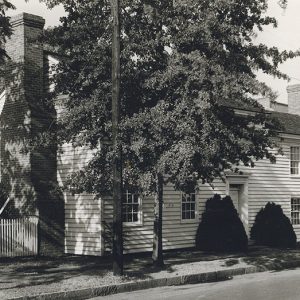 Hinderliter Grog Shop
Hinderliter Grog Shop  Hinderliter Grog Shop
Hinderliter Grog Shop 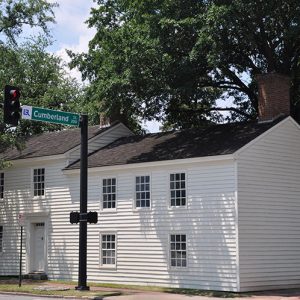 Hinderliter House - Modern View
Hinderliter House - Modern View 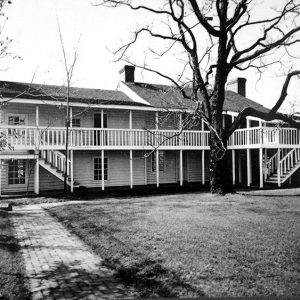 North Side
North Side 



Comments
No comments on this entry yet.